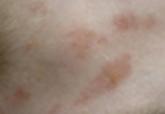Pediatric Dermatology
A Brief Primer on Acne Therapy for Adolescents With Skin of Color
The majority of adolescents with skin of color in the United States and other westernized civilizations develop acne vulgaris.
Drs. Serna-Tamayo, Janniger, and Schwartz are from Dermatology and Pediatrics, Rutgers New Jersey Medical School, Newark. Dr. Micali is from Dermatology, University of Catania, Italy.
The authors report no conflict of interest.
Correspondence: Camila K. Janniger, MD, Dermatology and Pediatrics, Rutgers New Jersey Medical School, 185 South Orange Ave, Newark, NJ 07103 (janniger@yahoo.com).

Differential Diagnosis
Infantile acne often is misdiagnosed because it is rarely considered in the differential diagnosis. When closed comedones predominate, acne venenata induced by topical creams, lotions, or oils may be etiologic. Chloracne also should be considered.14
Treatment
Guardians should be educated about the likely chronicity of infantile acne, which may require long-term treatment, as well as the possibility that acne may recur in severe form during puberty.1 The treatment strategy for infantile acne is similar to treatment of acne at any age, with topical agents including retinoids (eg, tretinoin, benzoyl peroxide) and topical antibacterials (eg, erythromycin). Twice-daily erythromycin 125 to 250 mg is the treatment of choice when oral antibiotics are indicated. Tetracyclines are contraindicated in treatment of neonatal and infantile acne. Intralesional injections with low-concentration triamcinolone acetonide, cryotherapy, or topical corticosteroids for a short period of time can be used to treat deep nodules and cysts.2 Acne that is refractory to treatment with oral antibiotics alone or combined with topical treatments poses a dilemma, given the potential cosmetic sequelae of scarring and quality-of-life concerns. Because reducing or eliminating dairy intake appears beneficial for adolescents with moderate to severe acne,27 this approach may represent a good option for infantile acne.
Conclusion
Neonatal and infantile acne vulgaris may be overlooked or misdiagnosed. It is important to consider and treat. Early childhood acne may represent a virilization syndrome.
The majority of adolescents with skin of color in the United States and other westernized civilizations develop acne vulgaris.
Many dermatologic diseases, including vitiligo and other pigmentary disorders, vascular malformations, acne, and disfiguring scars from surgery or...

The issue of increasing antibiotic resistance has become a serious global threat. The World Health Organization proclaimed that World Health Day...

As one of the most common skin diseases, acne research, clinical guidelines, and therapeutic innovation are always a hot topic at the Annual...

Isotretinoin is approved by the US Food and Drug Administration for the treatment of severe recalcitrant nodular acne. Mucocutaneous toxicity is...
